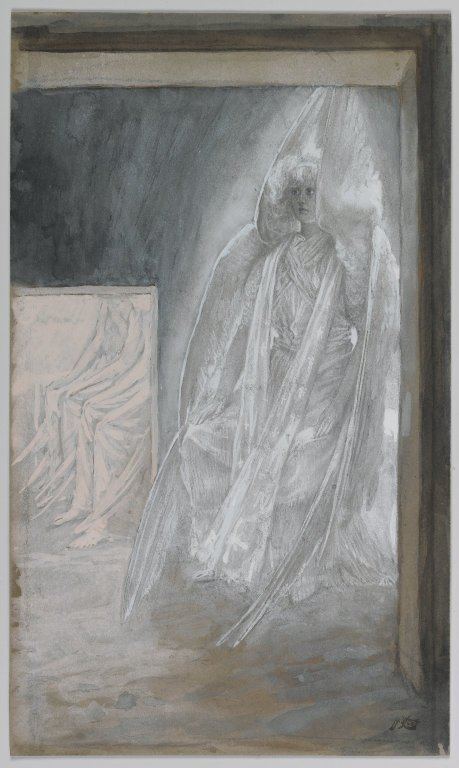 | ||
Matthew 28:3 is the third verse of the twenty-eighth chapter of the Gospel of Matthew in the New Testament. This verse is part of the resurrection narrative. This verse describes the angel that arrived at the tomb of Jesus in the previous verse.
The original Koine Greek, according to Westcott and Hort, reads:
ην δε η ειδεα αυτου ως αστραπηκαι το ενδυμα αυτου λευκον ως χιωνIn the King James Version of the Bible it is translated as:
His countenance was like lightning,and his raiment white as snow:The modern World English Bible translates the passage as:
His appearance was bright as lightning,and his clothing is white as snow.For a collection of other versions see BibRef Matthew 28:3
As with the great events of the previous verse, this verse emphasizes the importance of the figure and the events that happened. The text depicts the angel as an exalted figure and thus prompting great importance. The other gospels have a more muted description of the angel. Mark 16:5 and John 20:12 says the figure clad in white, while Luke 24:4 describes the clothes as dazzling. Perhaps combining the lightning face and white clothes of this verse.
The image of the angel has multiple descriptions in the Old Testament, reflecting Matthew's fondness for scriptural references. Daniel 10:6 mentioned an angel with a face like lightning, and Ezekiel 1 since lightning associates with the creatures surrounding God. Daniel 7:9 described God himself as appearing white as snow. Thus suggest that angels is linked to God and that they are more than mere messengers, but they also play an important role theophonic.
The description is also similar to that of the transfigured Christ at Matthew 17:2, but Boring suggests that the angel in that verse was a bit less in glory from Jesus, showing his more divine nature. Jesus is also described as being white as snow in Revelation 1:14. Color White symbolizes purity in both the Old and New Testaments, a reflection of the culture in that period. Jewish rabbis, Egyptian priests, and pious worshippers were all normally clad in white in this period.
